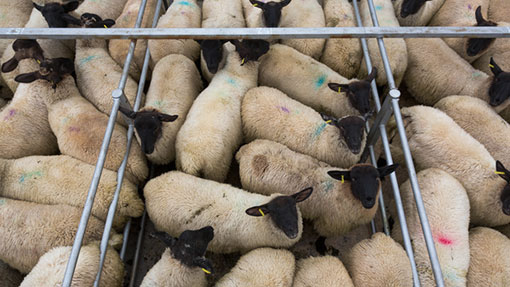Sheep sector ‘vision’ report predicts bright future for UK lamb

Sheep farming has the potential to expand in the UK to deliver greater economic, environmental and social benefits and play a stronger role in British agriculture, a new study has concluded.
The NFU and the National Sheep Association (NSA) set out this shared vision for lamb production in the UK in a joint report launched at the NSA Sheep Event on Wednesday (30 July).
The report, Vision for British Lamb Production, emphasises the need for the industry to react to market signals, expand export options for producers as well as build on the domestic market for sheepmeat.
See also: At a glance: World agriculture outlook 2014-23
The next generation of sheep farmers is vital for any vision of the future, the report says, as well as ensuring that both existing producers and new entrants adopt best-practice measures for health, welfare, nutrition, genetics, and all other aspects of production.
The report identifies five key areas the sector must exploit to safeguard its future: supply and demand, production systems, supply-chain efficiency, sheep health and welfare and new entrants.
“A successful industry is one with a ruthless focus on supplying the market with the product it needs as efficiently as possible.”
Charles Sercombe, NFU
NSA chief executive Phil Stocker said: “The potential is clear to see, and to make the most of this we need to do all we can to keep markets open and growing, in particular avoiding disease situations that potentially affect trade.
“We also need to maintain a focus on efficiency and costs and do all we can to build on the very positive image that surrounds UK lamb.”
NFU livestock board chairman Charles Sercombe predicted a “bright future” for the sheep industry in the UK, which was “well placed to address the challenges of global markets”.
“A successful industry is one with a ruthless focus on supplying the market with the product it needs as efficiently as possible,” he added.
“This will involve long-term partnerships across the supply chain to identify and clearly communicate customer requirements.”
The NSA and NFU will use the report to inform and convince policy and decision makers of the potential the sheep sector offers.
The report’s 10 key findings
- In 2011, the sheep sector employed more than 33,000 people on farm and more than 111,000 people in allied industries in England alone, with a net benefit to the economy of £465.9m/year.
- The UK accounted for 9.5% of global sheepmeat exports in 2012, behind New Zealand and Australia, which together accounted for about two thirds of global sheepmeat exports.
- The UK exports approximately 36% of annual lamb production with France taking more than half of the lamb we export.
- Domestic consumption of lamb decreased by nearly two thirds in the two decades from 1990 and the falling trend seems to be continuing with annual consumption decreasing from 7.5kg a person to 1.9kg.
- UK consumers now view lamb as an expensive choice and many have been conditioned to look for price promotions, which can then impact on market volatility.
- The farming industry must find ways to increase home consumption of lamb, demonstrating the value of home-produced lamb to the UK consumer while delivering both on price and eating quality.
- We need a resilient and sustainable flock in the UK. This means producers must be able to make a fair return from the market that reflects the investment and the risk they have taken to produce lamb for the food chain.
- Despite the improvement in prices in recent years, the majority of sheep producers would struggle to make a positive return on investment if farm subsidies were excluded from the business.
- The loss of our export markets through an exotic disease outbreak such as foot-and-mouth could impact farmgate prices overnight by an estimated £12.50 a lamb, destroying any hope of profitability.
- The exciting range of options in sheep farming and related industries need to be actively communicated for young people to understand and explore.
